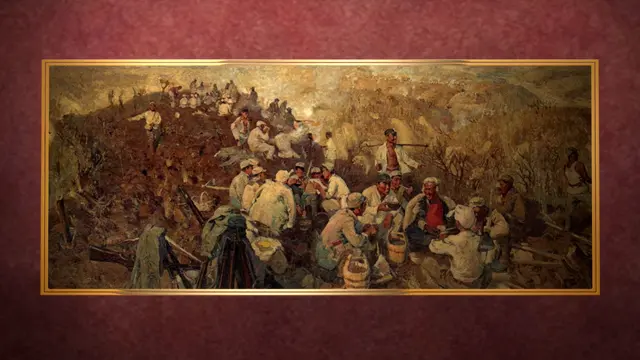02:12

In 1959, Chinese artist Jin Zhilin created an oil painting that took him five years to complete.
It depicts Chinese soldiers and peasants reclaiming wasteland in Nanniwan during the great production movement in 1941.
During China’s War of Resistance Against Japanese Aggression (1937-1945), the Shaan-Gan-Ning Border Region was the most important base area for the CPC. It was in northwest China, stretching across provinces of Shaanxi, Gansu, and Ningxia.
To weaken the communist forces, the KMT betrayed the anti-Japanese alliance and imposed a tight economic blockade on the region.
China's Shaan-Gan-Ning Border Region also suffered the worst natural disaster in decades.
The region faced severe food and supply shortages.
In response, Mao Zedong, the leader of the CPC, called for self-reliance.
In March 1941, the 359th Brigade of the Eighth Route Army were deployed to Nanniwan and launched the great production movement.
The army turned once desolate mountains and barren land into cropland and fields of bean, cotton and flax.
They learned how to spin yarn, creating a flourishing handicraft industry in the region.
The movement was quickly expanded to the entire base area, bringing immediate changes and prosperity to the region.
Three years later, soldiers reclaimed over 17,000 hectares of wasteland and achieved complete economically self-sufficiency.
The Nanniwan spirit of self-reliance and hard work has inspired generations of Chinese people.
Check out
The China Report
, our new weekly newsletter.Subscribe here!
 简体中文
简体中文

